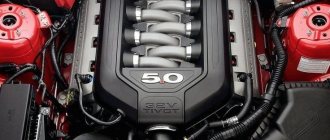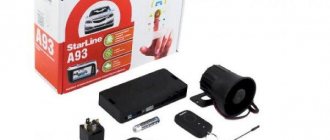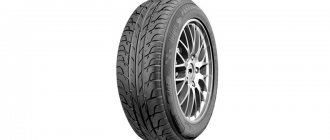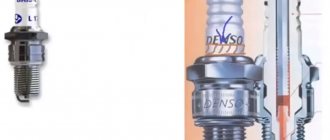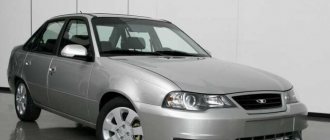The brainchild of the Tolyatti automobile plant is still the most popular vehicles on the Russian secondary market. They are chosen for a number of reasons, including: affordable cost, inexpensive repairs, good adaptability to domestic off-road conditions and ease of operation. However, choosing a used car is always associated with a certain risk of purchasing a problematic car, both legally and technically. Autocode tells you how to choose a VAZ car and what to look for when buying.
The best domestic car: which Russian car to buy
Experts in the field of transportation technology regularly rank the most popular cars, comparing their reliability, design, prices and other indicators.
The leaders invariably turn out to be Japanese, German and other imported cars. Russian transport is inferior to foreign cars in terms of technical characteristics, build quality, and external presentation. However, the situation in the domestic automobile industry is gradually changing. New technologies are being introduced, experience with improved safety systems and build quality is being adopted.
But the question still remains unclear: which domestic car is the best? We will discuss the characteristics of the 10 best-selling Russian cars.
conclusions
Despite many questions that arise regarding domestic cars, modern VAZ and UAZ models have reached a level where they can compete with their foreign classmates. The main weapon of Russian cars is their affordable price and maintainability.
One of the main arguments in favor of the attractiveness of Russian cars in the eyes of domestic consumers is that despite dozens of factories of the world's best corporations opening in the Russian Federation, just remember Ford, Hyundai, Volkswagen, the number of VAZs and other Russian cars is not decreasing. They attract not only with their relatively low price and availability of service, but also with increased reliability.
TOP 10 best domestic cars
The TOP 10 includes cars with better design and operational characteristics, greater comfort and reliability. When choosing, we took into account reviews from car enthusiasts and service station specialists. The cross-country ability of the vehicle was taken into account, as well as the equipment’s adaptability to Russian climatic conditions.
GAZ 31105 (Volga)
A car that was considered an elite car in Soviet times is today perceived as an ordinary inexpensive, but reliable and spacious vehicle. It is in particular demand among summer residents and people of the old generation. Advantages: massive and robust design compared to popular VAZ models or Chinese vehicles, improved external and internal design. The equipment still leaves much to be desired. Production of the car was discontinued in 2009, but it is still popular on the secondary market. Today its cost is from 185,000 rubles.
Lada Niva 4x4
The car has a 1.7 liter petrol or diesel engine with a power of 83 hp. With. with a manual transmission and a spacious station wagon body with a high seating position. Consumption in the city and on the highway is about 9.5 l/100 km. The car is equipped with air conditioning, heated mirrors and front seats. Drivers note good off-road performance, quality paintwork, and high maintainability. Among the shortcomings: poor-quality glass seals, noises and squeaks in the cabin, frequent and minor breakdowns in functional units. The price of the car is 519,000 rubles.
Lada 4x4 Urban
The advantages of this model include simplicity of design and high-quality body manufacturing. A 1.7 l (83 hp) petrol engine is installed. Thanks to the reliable suspension, the car has good cross-country ability (you can reach speeds of up to 80 km/h on bumpy roads). Fuel consumption is 9 l/100 km (outside the city) and up to 12 l/100 km in the city. The owners consider the disadvantages to be poor interior lighting at night and poor sound insulation (the noise of the engine, air conditioner, and transmission interferes). Breakdowns often occur in the clutch and gearbox. You can buy a car produced in 2022 for 625,000 rubles.
Lada Priora
This is a budget car with fuel consumption on the highway of 5.5 l/100 km and 6.4 l/100 km in the city. A 1.6 liter petrol engine with a capacity of 106 hp is installed. With. There is climate control, a robotic manual transmission, a rain and light sensor. The side mirrors, windshield, and front seats are heated. The impression is spoiled by the insufficiently durable plastic interior trim and poor noise insulation. The last release of the Priora took place in 2018, as AvtoVAZ began reconstructing outdated models.
Lada Largus
Lada XRAY Cross
This is a model with increased comfort and improved safety, adapted for use in the Russian climate. The car has increased ground clearance to 215 mm. Composite bumpers with easily replaceable elements are used, as well as original rims. The shock absorbers, steering rack and power steering have been improved. There is a trunk with a triple bottom (for stowing a spare tire and additional space for things). The design of heated seats has been improved. Gasoline engines of 1.6 liters (106 hp) or 1.8 liters (122 hp) with a manual transmission are capable of accelerating the car to 186 km/h and consume about 7 liters of fuel per 100 km. The car starts well and does not slip in the snow. The price depends on the configuration, ranging from 641,000 to 874,000 rubles.
Lada Granta
Lada Vesta
Motorists note the following “advantages” of the model: maneuverability, ease of control, good equipment (cruise control, heated windows and mirrors, comfortable seat design, the presence of an audio system and Bluetooth), decent interior lighting;, pleasant exterior. The “minus” is the small trunk volume. A car with the “Lux” package costs 800,000 rubles.
UAZ Hunter
UAZ Patriot
Powerful SUV with a 2.7 liter gasoline engine and 150 hp. With. with a 5-speed manual transmission, all-wheel drive, ABS anti-lock wheel system and EBD electronic brake force control. The package includes power steering (power steering), an on-board computer, fasteners for child seats, and steel rims for wheels. The mirrors are heated and rotated electrically. The cost of the latest modification is 911,000 rubles.
In conclusion, we note that many car enthusiasts note in their reviews that unpretentious Russian cars serve them faithfully for 10-15 years, and their maintenance is much cheaper than the operation of imported equipment. Some car owners prefer inexpensive domestic cars, which they use for 2-3 years, and then sell and update the car. This is more profitable than buying a used foreign car: for the money that goes into a Lada or UAZ, you can only buy a shabby imported car with a dubious history and poor technical condition.
Source
Rating leaders
Despite a slight lag of 3.2 liters compared to previous cars, the Fiat500 Twin Air AT 0.9 model deserves 3rd place in the overall rating. Judge for yourself: with its compact dimensions, this car is considered the safest in its class, and its two-cylinder unit is capable of producing as many as 85 “horses” from under the hood. At the same time, the car consumes up to 3.6 liters on the highway, in the combined cycle consumption is 4 liters, and in the city up to 4.5 liters.
The Germans never cease to amaze the global automotive community with the quality and capabilities of their equipment. “Silver” rightfully goes to the mega compact car Smart Fortwo, whose engine consumes 4.5 liters in the city and up to 3.4 liters on the highway. Don’t rush to wonder why this particular car is among the top three, because there are enough models whose consumption is 3.2 liters.
The fact is that in the period 1998-2003 this car model was produced in the Coupe 0.8 CDi version. At the same time, the smart car consumed 3.4 liters of diesel fuel in the urban cycle, and in highway conditions this figure barely reached 3.1 liters.
Well, and finally, the leader among cars in terms of fuel consumption is the Volkswagen XL-1 (again, the Germans “outdid” everyone). The model has been produced for three years in small batches, and its consumption in highway conditions does not exceed 0.9 liters per hundred kilometers. Today it is the most economical car model in the world. Alas, the car is not officially presented in Russia, but of course there is an opportunity to become the owner of this vehicle.
Auto repair school – DIY car repair
The biased attitude of drivers towards the domestic automobile industry does not reduce the popularity and sales of Russian cars. In recent years, there has been a gradual increase in demand for new models, which confirms the demand for cars. The main reason for its popularity is the price, because most Russians only have access to domestically produced and assembled cars. In this regard, Lada becomes a profitable option.
The easiest way to determine engine condition
As you know, there are two fools at the market, the first wants to sell at a higher price, the second wants to buy at a lower price. And since when selling a used car, the owner praises everything he can, but it’s not always possible to verify these words even after driving, even a broken engine can pull as it should, but consume oil, which cannot be determined in one drive. So many uncomprehending people get caught doing engine overhauls after buying a car.
But knowing the simple signs to determine the condition of the engine will no longer get you to this repair, but if you like the car, you can reduce the price for engine repair by pointing out these signs to the seller. Below is a video where the main features are given, using the example of an eared engine.
Gorobinsky S.V.
Driver reviews
I bought myself a Lada 4×4 as a workhorse and for going fishing in remote places. The cross-country ability is excellent, the reliability corresponds to our realities. I took it in the coolest configuration to experience all the advantages of a domestic jeep. For more than 2 years nothing has broken, I only change consumables.
I exchanged my foreign car for a new Granta. The car turned out to be no worse, and in some aspects even better. In the first year and a half I drove 15 thousand km. During this time, the front wheel bearing and battery had to be replaced under warranty. I have no other complaints. The cabin is quiet, there are no “crickets” or squeaks, the engine and transmission operate smoothly, and the suspension is almost inaudible over bumps.
Locally assembled cars dominate the Russian market, accounting for almost 62% of the Russian vehicle fleet. Most of them are VAZ. The company's products have evolved noticeably in recent years, preserving the best traditions of the Lada brand, and delighting fans with modern solutions.
Pros and cons of Russian vehicles
The decline that the Russian auto industry experienced in the 90s of the twentieth century is gradually becoming a thing of the past. According to statistics for 2022, 363,658 Lada cars were sold in Russia, 63,910 GAZ cars, 38,892 UAZ cars. This cannot be said that domestic technology is flawless - there are still plenty of disadvantages, but Russian cars have their advantages:
- good cross-country ability on bad roads;
- simplicity of design, possibility of independent maintenance and repair;
- availability of any parts for sale at a relatively low cost;
- the possibility of tuning, replacing structural elements (gearbox, engine) or interior trim;
- low price compared to foreign cars, low prices for maintenance and car repairs.
Domestic cars are easier to sell, albeit for little money, since for a large part of the population the prices for imported cars are still sky-high.
The disadvantages of Russian cars are still much less reliable design, poor speed and performance characteristics, insufficient quality finishing, and low noise insulation of the car interior.
First, let's talk about what you should pay attention to first.
Iron
It's no secret that the car body requires the most expensive repairs. Therefore, first of all, we look at the condition of the iron. Read more about how to check the paintwork and body geometry of a used car. If you find signs that the car has been repainted, or its body geometry is damaged, most likely the vehicle has been in a serious accident. It is better to refuse to choose such a car. Also, you should not buy a vehicle with traces of corrosion. Cars of the VAZ family rust quite quickly. And to slow down the “blooming” of body elements can require a lot of effort and money.
Internal filling
Next, we check the condition of the main components and assemblies. Experts recommend especially carefully studying the performance of:
- transmission (extraneous noise when changing gears, as well as difficulties with shifting them indicate problems with the gearbox, the replacement of which (especially if it is an automatic) will cost several tens of thousands of rubles);
- suspension elements (swaying of the car when driving is the first sign of problems);
- engine (dark or bluish exhaust when the power unit is running indicates that the latter requires major repairs, which will also cost a pretty penny);
- electrical equipment (electrical problems occur quite often in used VAZs, so if, when inspecting the car, you find involuntary operation of the wipers or sound signal, be prepared to replace the mounting block).
As they say, there are always two “fools” in the market - one sells, the other buys. In 99 cases out of 100, the owner is not going to tell you about all the problems with his used car. If you are not confident that you can independently identify shortcomings in the technical condition of the vehicle, it is wise to take a knowledgeable person with you. It will help you make the right choice and, if necessary, report faults that you simply do not notice. If finances allow, one of the most rational options is to check a used car at a specialized service center. True, you will have to pay several thousand rubles for high-quality diagnostics.
You can order an on-site inspection on the Autocode website. Read more about the on-site diagnostic service.
Which VAZ (Lada) cars are considered the best in 2022
The Russian automobile industry originated at the turn of the 19th and 20th centuries. The starting point of this event is considered to be the creation of the first car with an internal combustion engine by Frese and Yakovlev. Mass motorization began during the first five-year plans in 1929. In 1969, construction began on a giant automobile plant on the Volga in the city of Tolyatti. Today Avtovaz is one of the largest manufacturers of passenger cars.
Experts are still arguing about how justified the construction of the expensive supergiant, which began producing cars based on the Italian Fiat, was. Wouldn't it be better to use budget funds to modernize existing automobile plants? After decades, this dispute has no practical meaning: Lada cars have gained recognition and love among motorists on a sixth of the land.
When discussing the attractiveness of the manufacturer, it is worth noting that VAZ cars:
The proposed rating is based on owner voting for 2020-2021.
Lada Granta Sport
Lada Granta is a new budget and compact car from Togliatti, replacing three outdated models (Classic, first generation Kalina, Samara). The development of the sedan took several years, and in the spring of 2011 it was presented to the public. Soon its five-door version, the liftback, was put into production. A decade later, we can firmly say: this “B-class” car is one of the best-selling in Russia and the most reliable VAZ product.
Which foreign cars should you prefer?
Now let’s look at foreign cars that have gained popularity among many car owners in Russia. These cars are the most economical and compact in the small car class. So, we list the popular models that consume low amounts of fuel:
- Ford Fiesta Econetic - the car consumes 3.3 liters and is also considered one of the safest to operate. The car is equipped with airbags and is easy to drive even for drivers with minimal driving experience;
- The Škoda Oktavia Greenline consumes 3.2 liters of gasoline and is considered a fairly roomy family five-seater hatchback;
- Renault Clio dCi (1.5) also consumes 3.2 liters per hundred. It is equipped with a Clio5-liter diesel unit and has not only an elegant exterior, but also a very cozy interior that provides a comfortable ride;
- The Kia Rio CRDi is equipped with a 1.1-liter engine and has good performance, and is also very popular among fans of comfortable cars.
- Hyundai i20 CRDi is equipped with a 1.1-liter 74-horsepower diesel engine and consumes 3.2 liters per hundred kilometers.
All models are perfect for any family, as they will provide significant budget savings.
Lada Kalina
Lada Kalina is a group of front-wheel drive class B cars, including a station wagon (sedan in its original version) and a 5-door hatchback. Over the past decades, Lada Kalina has received the status of “people's car” due to its budget cost, decent equipment, pleasing design, and suitability for use in domestic realities. The biography of this Lada is as follows: the development of the project began more than thirty years ago, Lada Kalina received its sonorous name in 1998, and its final design in 2001. The car went into production in 2004. After merging with Granta in 2022, the production of this series of vehicles was completed.
Lada Vesta
The next position in the rating is occupied by several modifications - Vesta SW Cross and Lada Vesta. Lada Vesta is a relatively small car in the “C” segment, available in several versions (as a 5-door sedan and station wagon). It became a car reflecting a new era of AvtoVAZ development. Vesta, a car with an elongated body, thanks to which it can be considered a family car, was presented to the audience in the form of a sedan in 2014 and a year later received serial status. The Vesta station wagon entered the market three years later. Now car sales remain at the level of 60 thousand cars per year.
Vesta SW Cross
The development of the exterior of the Vesta SW Cross was carried out by the chief stylist of the plant, Mattin, whose goal was to move away from the standards and give the 5-door version a maximum of sporty surroundings. The result of the restyling was unique bumper lines, a black plastic body kit and a maximum increase in ground clearance to 203 mm.
The interior of the SW is made in gray-black and cheerful orange colors. In different trim levels, in addition to power windows, climate control and other options, you can get: LED lighting, heated second-row seats, second armrests, 6 speakers, a multimedia system with a touchscreen.
The SW Cross body is galvanized, the sills and bottom have anti-gravel protection. Cars are offered with engines of 1.6 and 1.8 liters (106 and 122 hp, respectively) for the sedan and station wagon. The engine with a five-speed manual transmission is enough to start up to 100 km per hour in 12.6 seconds. Maximum acceleration is possible up to 172 km/h.
Also, the 1.8 liter Vesta SW Cross, equipped with the same mechanics, is capable of reaching a speed of 100 km/h in 11.2 seconds. with acceleration up to 180 km/h. The crossover's chassis is equipped with an improved energy-intensive suspension. The trunk volume with a hidden organizer is 480 liters, expandable to 825 liters with the second row seats folded. The traction control system helps the crossover overcome moderately difficult muddy areas, but you should not use the car in off-road conditions.
Lada Kalina Sport
Lada Kalina Sport is a sports version of the VAZ-1119. The car received certification in 2008 in several modifications with 1.4 and 1.6 liter engines. The first version is in many ways similar to the basic Lada Kalina luxury assembly, and the Lada Kalina Sport 1.6 is a car designed for sports driving.
The engine power is 1.4 - 89 horsepower, the car can accelerate to 165 km/h. It reaches 100 km/h in 11.5 seconds. “Sport” 1.6 is equipped with a 98 horsepower engine, which allows it to accelerate to 100 km/h in 10.7 seconds.
This modification is equipped with a rigid suspension with reinforced springs. The vehicle's seating position is lowered for better grip on the road. An organic innovation was the use of a parking brake of an updated design and a steering mechanism with a gear ratio of 3.1, which guarantees smooth, jam-free operation of the steering mechanism. As the experience of the owners testifies, “Kalina Sport” is a hatchback that lends itself well to tuning. Its sporty characteristics are of interest to those who need the experience of driving a sports car.
VAZ-2105 drift, 10,000,000 rub.
This car was definitely a surprise. A “Zhiguli” for 10 million is something that many people can’t even wrap their heads around. But just look at this “miracle”. The owner is definitely a fanatic.
VAZ-2105 was made specifically for drifting by a professional racer. Equipped with a special turbo engine from a foreign car with a capacity of 600 horsepower. Through the “Zhigotsar” (as the car was nicknamed) the silhouette of the usual Lada is only slightly visible.
The geometry of the front suspension has been completely changed. And the body became much larger. The owner drove the VAZ for more than 10 years in drift competitions and only three years ago decided to change the engine and make other reconstructions.
Lada Xray
Lada Xray appeared as a result of joint creativity of the Renault-Nissan concern and VAZ. About 500 hatchback parts are produced in Tolyatti, and some components are imported. The body design uses the breakthrough "X-Graphics" theme from Steve Mattin.
Xray has a characteristic appearance, the main elements of which are the x-shaped radiator lining made of black plastic with characteristically curved moldings. The side stampings echo the overall theme of visual expansion.
The XRAY interior, with many original engineering solutions, meets the requirements for modern comfort in a car of this class. The first row seats are not only longitudinally adjustable, the driver's seat is easy to adjust to your height thanks to its vertical offset. Some trim levels include a removable trunk cover to create a flat floor when the rear seats are folded. There are many organizers in the cabin: under the first passenger seat, in the trunk, spare wheel niches, behind the rear wheel arches, the glove box, and door trims.
The artificial microclimate system includes a heating and ventilation system with an additional air duct under each seat. The hatchback may include an automated climate system or air conditioning. All electronic components were developed by Renault-Nissan engineers.
